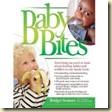Ahhhh….my favorite time of year—football season. I’m assistant coach to my son’s tackle football team this year. I put this info together and shared it with our team and their parents. I brought in “urine specimen” cups for them to view how their urine looks when they are well and not-so-well hydrated. The kids went nuts when I tried to drink the “specimens”, but I think they will remember this easy way for them to gage their own hydration status.
Fueling Your Athlete
To maximize performance in the classroom AND on the field, it is important to pay attention to the foods we eat. Proper nutrition can help your child feel better, be more alert and learn more. During competition, adequate nutrition can help your child stay injury free or recover quicker if injured. Good nutrition does not have an off-season. To get the most benefit, you need to start now and continue throughout the year. Remember, you set the example for your family!
The Nutrition Playbook:
1. Start each day with Breakfast!
Any food can count toward breakfast. Be sure to include fruit, grains, proteins and dairy.
2. Focus on powerhouse foods:
- Fresh or Frozen Fruits and Vegetables: give energy and nutrients needed to stay active, focused and healthy
- Aim for 2 pieces of fresh fruit and 1-2 cups of Vegetables everyday. Fruit juices are a source of liquid and nutrients but more benefit comes from eating the whole fruit.
- Lean Sources of Protein: help build new muscle and repair damaged tissues. Baking, grilling, broiling boiling or steaming are great ways to prepare meats. Lean choices include:
- Fresh or frozen Fish, Canned Tuna or Salmon
- Skinless Chicken Breast
- Eggs
- Peanut Butter
- 1%, 2% or Part Skim Cheese
- Whole Grains, breads and cereals: are great source of vitamins, minerals and fiber. They provide a strong source of Carbohydrates, the body’s preferred fuel source! Sources include:
- Oatmeal, Grits or Whole Wheat Cold Cereals
- Whole Wheat Breads, English Muffins, Tortillas
- Wheat Pasta, Brown Rice
3. Drink 8 oz of 1% or Fat Free Milk or Eat Yogurt at least twice everyday! Milk supplies protein and carbohydrate and is an excellent source of calcium, potassium and many other important nutrients!
4. Plan on adding snacks during the day to fit around practices and games.
- Snack Ideas: [Good to use as pre or post game snack!]
- Peanut Butter Crackers, graham crackers or sandwich with a Banana and Glass of Milk
- Cup of Yogurt, piece of fruit, and pretzels with water
- Cup of Yogurt with granola cereal
- 3 Fig Newton’s with a glass of water or milk
- Cheese and crackers, grapes, and water
- Homemade Trail Mix: Handful of nuts (any type will work) mixed with a ½ handful of dried fruit (raisins, cranberries, apricots, etc.)
- Celery and or Apple with peanut butter
- Cereal and low fat milk. Add some fruit!
5. Limit Fast Foods! Most restaurant meals short change you in fruits and vegetables and contain excessive amounts of sodium. If you choose fast foods, make sure to add fresh fruit to the meal and choose Low Fat (1%) or Fat Free (Skim) milk in place of sodas or tea.
6. Stay hydrated during the day by drinking plenty of fluids.
You should be urinating at least every 2-3 hours. Sports drinks may help some, but your first choice should be water. You can monitor urine color to get a better idea of how well hydrated you are. Try to keep urine color between the numbers 1 and 3. (See chart below)
You do not want your urine to be totally clear as that could signify over-hydration. Also keep in mind, certain medications, vitamins and herbal supplements can cause urine colors to change.
7. Rest and Recovery! Games and practices can make it difficult to keep a regular sleep pattern. It is important to get proper rest to help reduce risk of injuries and provide for time to recover from training. Get a jump on nutrition by planning meals and snacks in advance to help when time becomes limited.
|
It’s Your Health. It’s Your Life. Make That Change!
~John








![iStock_000005762739Small[1] (2) iStock_000005762739Small[1] (2)](http://nutritionpair.com/change/wp-content/uploads/2010/04/iStock_000005762739Small12_thumb.jpg)
